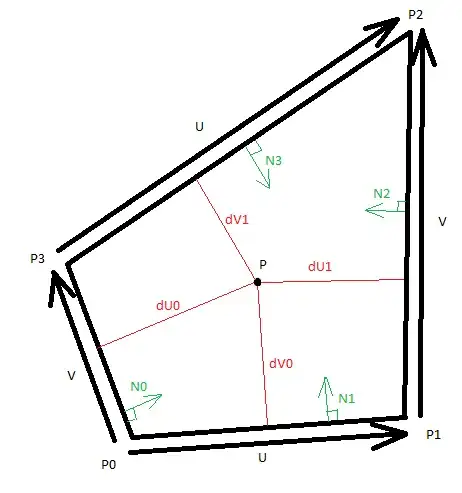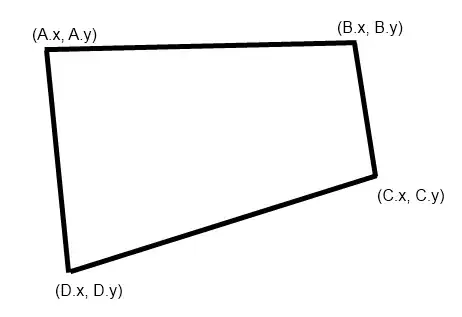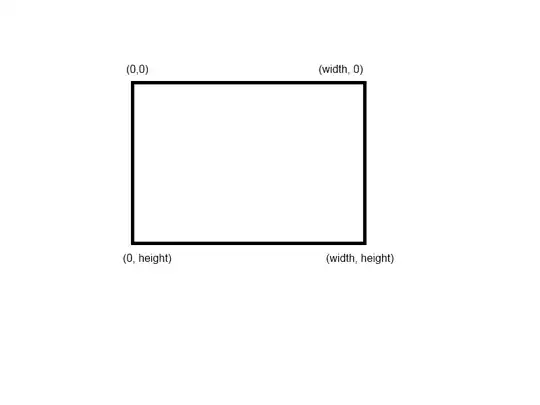The best solution I've found so far on a forum lost in the sea of forums is to decompose your problem like this :

Here, U and V represent coordinates within the quadrilateral (scaled between 0 and 1).
From $P0$, $P1$, $P2$ & $P3$ we can easily compute the normalized normal vectors $N0$, $N1$, $N2$ & $N3$.
Then, it's easy to see that :
$$u = \frac{dU0}{dU0 + dU1} = \frac{(P-P0) \cdot N0}{(P-P0).N0 + (P-P2) \cdot N2} \\
v = \frac{dV0}{dV0 + dV1} = \frac{(P-P0) \cdot N1}{(P-P0).N1 + (P-P3) \cdot N3}.$$
This parametrization works like a charm and is really easy to compute within a shader for example.
What's tricky is the reverse: finding $P(x,y)$ from $(u,v)$ so here is the result:
$$x = \frac{vKH \cdot uFC - vLI \cdot uEB}{vJG \cdot uEB - vKH \cdot uDA}, \\
y = \frac{vLI \cdot uDA - uFC \cdot vJG}{vJG \cdot uEB - vKH \cdot uDA},$$
where:
$$uDA = u \cdot (D-A), \quad uEB = u \cdot (E-B), \quad uFC = u \cdot (F-C), \\
vJG = v \cdot (J-G), \quad vKH = v \cdot (K-H), \quad vJG = v \cdot (J-G),$$
and finally:
$$A = N0_x, \qquad \qquad B = N0_y, \quad C = -P0 \cdot N0, \qquad \\
D = N0_x + N2_x, \quad E = N0_y + N2_y, \quad F = -P0 \cdot N0 - P2 \cdot N2, \\
G = N1_x, \qquad \qquad H = N1_y, \quad I = -P0 \cdot N1, \qquad \\
J = N1_x + N3_x, \quad K = N1_y + N3_y, \quad L = -P0 \cdot N1 - P2 \cdot N3.$$
I've been using this successfully for shadow mapping of a deformed camera frustum mapped into a regular square texture and I can assure you it's working great! :D



